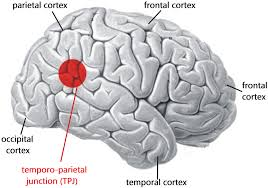Babies know more than you think
- rahul vidwans
- May 15, 2024
- 2 min read
Updated: Sep 16, 2024

In the journey to understand the intricacies of infant cognition, researchers have conducted groundbreaking experiments that shed light on the innate abilities of babies. These experiments reveal that babies' minds are far from blank slates, equipped with remarkable cognitive capacities from the moment they enter the world.
Face recognition, a cornerstone of social interaction, is one such ability. Through experiments utilizing eye-tracking mechanisms, researchers have shown that even newborns prefer faces over other visual stimuli. This innate predisposition lays the foundation for early social bonding [1].
Another fascinating aspect of infant cognition is their early numerical abilities. In experiments, infants as young as six months old were presented with displays of objects, that were consistent in number. While looking at them, the babies were not interested. But when a ball was added, they suddenly became interested. This experiment was done with objects of varying shape, size and colour and each time the babies were surprised only when a ball was added or subtracted. [2].
Infants also exhibit a surprising sense of probability. Researchers presented a transparent box filled with 3 red balls and 1 black ball to babies. The balls were moved around by a machine and one was dropped through a hole in the bottom. Babies were less surprised when a red ball popped out, as it was the most probable event. they were surprised when a black ball came out. This shows they have a sense of probability. [3]
Furthermore, classic experiments pioneered by Jean Piaget have demonstrated infants' understanding of object permanence. By systematically observing infants' neural responses to disappearing objects. If we put an object behind a book and make the book fall backwards, seemingly crushing the object (in reality it escaped through a trapdoor) babies look at it longer. They are awed at an object disappearing out of nowhere. This points out that babies also get that objects cannot disappear. without reason [4].
References:
Johnson, M. H., & Morton, J. (1991). Biology and cognitive development: The case of face recognition. Wiley-Blackwell.
Feigenson, L., Dehaene, S., & Spelke, E. (2004). Core systems of number. Trends in cognitive sciences, 8(7), 307-314.
Teglas, E., Vul, E., Girotto, V., Gonzalez, M., Tenenbaum, J. B., & Bonatti, L. L. (2007). Pure reasoning in 12-month-old infants as probabilistic inference. Science, 332(6033), 1054-1059.
Piaget, J. (1954). The construction of reality in the child. Routledge..




Very interesting!!